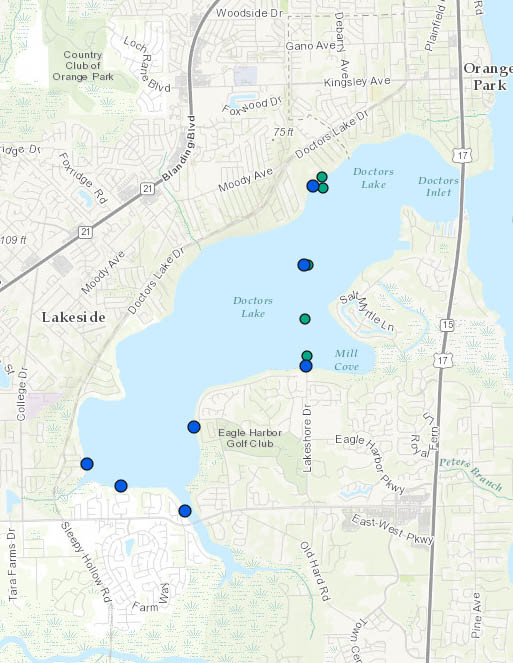Toxic algae bloom raises concerns in Doctors Lake
FLEMING ISLAND – Local and state health officials are recommending residents keep their distance from toxic algae in Doctors Lake this week.
The warning comes after researchers found algae in …
This item is available in full to subscribers.
Attention subscribers
To continue reading, you will need to either log in to your subscriber account, or purchase a new subscription.
If you are a current print subscriber, you can set up a free website account and connect your subscription to it by clicking here.
If you are a digital subscriber with an active, online-only subscription then you already have an account here. Just reset your password if you've not yet logged in to your account on this new site.
Otherwise, click here to view your options for subscribing.
Please log in to continueDon't have an ID?Print subscribersIf you're a print subscriber, but do not yet have an online account, click here to create one. Non-subscribersClick here to see your options for subscribing. Single day passYou also have the option of purchasing 24 hours of access, for $1.00. Click here to purchase a single day pass. |
Toxic algae bloom raises concerns in Doctors Lake
FLEMING ISLAND – Local and state health officials are recommending residents keep their distance from toxic algae in Doctors Lake this week.
The warning comes after researchers found algae in the lake contained elevated levels of a toxin known as microcystin.
The toxin can propagate quickly if weather is favorable. The toxin’s primary target is the liver, but exposure can also cause eye, nose and throat irritation.
All tests taken within the last 30 days showed the presence of the toxin, according to online Florida Department of Environmental Protection documents.
Levels of the toxin near Mill Cove on Doctors Lake showed levels nearly five times higher than those taken at the center of the lake.
Samples taken by the St. Johns Riverkeeper on July 12 show toxin levels of 14.1 micrograms per liter, more than three times higher than the U.S. Environmental Protection Agency’s draft criteria for recreational exposure of four micrograms per liter.
“Unfortunately, most of these algal blooms that are occurring in Doctors Lake and the St. Johns River have the potential to produce dangerous toxins,” said Lisa Rinaman, the St. Johns Riverkeeper, the nonprofit organization that advocates for the river.
Although algae blooms are a regular summer occurrence on Doctors Lake, Rinaman said algae growth is exacerbated by nutrient pollution from fertilizer runoff and failing septic tanks.
Sample results show the toxin present in Swimming Pen Creek – which is fed from Doctors Lake water.
“Stay out of the water,” said Jose Morales, Community Health Initiatives Coordinator for the Florida Department of Health in Clay County. “Don’t touch it, don’t swim in it, don’t drink it.”
In a statement, DEP officials said they were aware of the toxicity levels.
“We take all algal blooms seriously and will continue to respond as quickly and efficiently as possible to both observed and reported algal blooms to ensure the health and safety of Floridians, visitors and our natural resources,” said Dee Ann Miller, a DEP spokesperson, in a statement.
Researchers with the St. Johns River Water Management District drew a surface-level sample from the lake on July 19. Miller said the results of that test will be posted as soon as they are available.
Rinaman advocates for fertilizer buffer zones on properties that border bodies of water. Of course, with the regular summer showers in Northeast Florida, an increased amount of these nutrients will wash into Doctors Lake, further encouraging the growth of toxin producing blue-green algae.
Summer’s high temperatures, abundant sunlight and frequent rainstorms increase the presence of algal blooms in Florida waterbodies. There are currently no official health advisories issued around the lake.
“However, our river will continue to be sick and the health of our families will continue to be at risk from exposure to toxic algae, until we reduce the amount of nutrient pollution going into our waterways,” Rinaman said.
Individuals can report algal blooms using DEP’s toll-free hotline, 855-305-3903, and online at www.reportalgalbloom.com. DEP also regularly updates the results of tested algae on an interactive map located at https://depnewsroom.wordpress.com.








